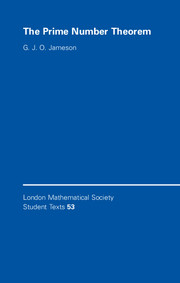Book contents
Preface
Published online by Cambridge University Press: 05 June 2012
Summary
How many prime numbers are there less than a given number n? Needless to say, an exact answer, in the form of an expression involving n, is not available. However, it is reasonable to ask whether there is a simple formula that approximates (in some sense) to the answer for all n. This is a very natural question to ask, but the prime numbers appear to be distributed in a very irregular way, and the reader will be in good company if he or she cannot imagine how to begin to answer it. However, it has been answered: the prime number theorem states that the required approximation is given by n/(logn) (and even better by other related formulae). This theorem is without question one of the really great theorems of mathematics. It is the central topic of this book.
Let us place the theorem in the mathematical landscape. It belongs, in principle, to analytic number theory, which is concerned with the estimation of number-theoretic quantities. While it is clearly one of the best theorems in this subject, it occupies a somewhat off-centre position there because of the fact that its most accessible proof requires hardly any number theory but quite a lot of analysis. For this reason, it does not fit very comfortably in books on analytic number theory, often appearing as an outlying topic. Meanwhile, if it is mentioned at all in a book on analysis, it will be in the role of a far-out application.
- Type
- Chapter
- Information
- The Prime Number Theorem , pp. vii - xPublisher: Cambridge University PressPrint publication year: 2003



